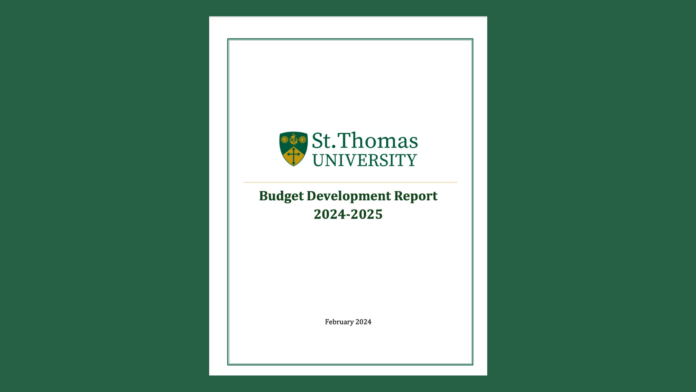St. Thomas University released its latest budget report, revealing a forecasted operating budget deficit of $380,400 for 2023-2024. This report contains financial and operational context that will help the President’s Advisory Committee construct the budget for the next fiscal year.
The operating budget “key issues,” as described during the university’s budget town hall on March 27, are enrolment and scholarship funding.
STU has been running a financial deficit since 2014-2015. In 2022-2023 there was a $1,180,313 operating budget deficit followed by this year’s deficit and an expected deficit next year.
Internally restricted funds are used to cover the operating budget deficit each year. During the town hall, James Culligan, vice president of finance and administration, said that of the restricted funds left they are being used “as stringently as possible.”
“We do know that use of certain restricted funds is a short-term solution to our operating deficit … We do not have any internally restricted funds remaining to cover scholarships being paid through operations,” said Culligan.
$3.4 million ancillary debt
The town hall also noted that the university needs to start turning multiple annual surpluses to pay down an estimated $3.4 million accumulated ancillary services debt.
The budget report stated that “approximately 77 per cent of expenses are fixed costs” and the university has “limited ability or discretion to reduce the cost.” These costs are full-time staff and academic wages as well as costs related to utilities, cleaning, and security.
Culligan also added that the university cannot use funds from government or the provincial operating grant to offset the ancillary debt.
As for the university’s $15.6M provincial operating grant that they received in 2023-2024, it made up 46.6 per cent of revenues. The other key contributor is tuition and fees which represents $15.9 million or 47.5 per cent of revenues.
Increase full-time enrolment
Increased enrolment will be the most important factor for the university to operate financially positively. An increase in students results in more tuition and a higher provincial operating grant.
Between 2013 and 2022 STU has seen a full-time enrolment decline of 30 per cent or 653 net full-time students. According to the report, enrolment decline is “varied and complex” and recruitment efforts in New Brunswick have been challenged by “increased competition and demographic trends.”
A new challenge for STU will be the recent international student cap brought by the federal government. The university will continue to work with partners to reduce enrolment impact. There were 191 international students in 2023.
As of now there are no updates on how the federal government’s cap will affect the university.

